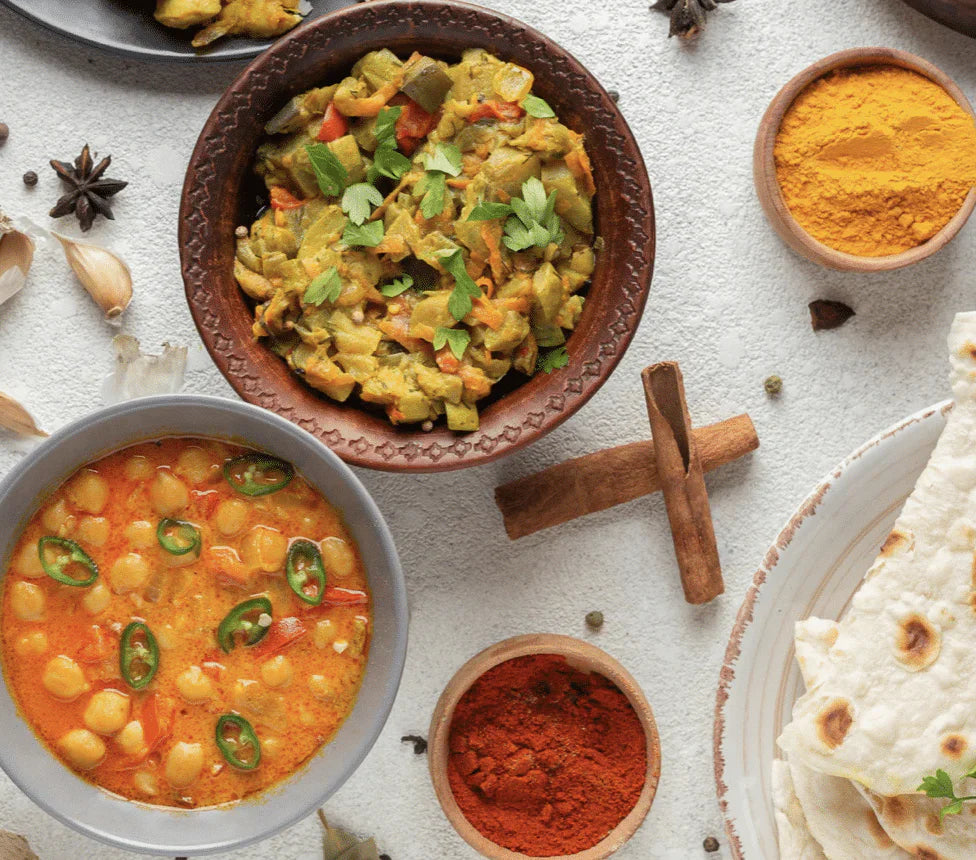
Indian Protein Diet Vs. International Protein Diet
Share
In recent years, there has been a tremendous surge in health and fitness consciousness across the globe, leading to an increased focus on making diets protein-rich. Proteins play a crucial role in building and repairing tissues, supporting immunity, and aiding in various bodily processes. While the concept of a protein diet is universal, there are distinct differences between the Indian protein diet and the international protein diet. Let’s explore both diets and their impact on overall health and well-being.
The Indian Protein Diet
The traditional Indian diet is rich in plant-based protein sources, which is great for vegetarians and vegans. Lentils, chickpeas, kidney beans, and other legumes are staples in Indian cuisine, providing essential proteins, fibre, and other nutrients. Dairy products are extremely popular in India, with paneer (cottage cheese) and yoghurt being significant sources of protein.
One of the primary advantages of the Indian protein diet is its emphasis on incorporating a variety of spices and herbs. Turmeric, cumin, and ginger have anti-inflammatory properties, while fenugreek and curry leaves aid digestion. These elements enhance the nutritional value of Indian meals and contribute to overall well-being.
The International Protein Diet
Now on the other hand, the international protein diet often centres around animal-based protein sources like lean meats, poultry, fish, and eggs. While this diet provides a complete set of essential amino acids, it is not suitable for those following vegetarian or vegan lifestyles. This diet also includes dairy products like cheese and whey protein, which are commonly used in shakes and supplements to meet protein requirements. In Western countries, protein bars and shakes are extremely popular as convenient options for individuals on the go.
Let’s compare the two and see their differences.
- The Indian protein diet offers a diverse range of plant-based proteins, such as lentils and beans into meals, however they may not provide all the essential amino acids in adequate amounts. The international protein diet relies more on animal-based proteins, which limits options for vegetarians and vegans.
- Indian protein sources tend to be advantageous for weight management but often cause bloating and unease of the stomach. Compared to the Indian diet, the international protein diet tends to have a higher calorie count and isn’t beneficial to those who want to lose weight.
- In comparison to the Indian protein diet, which relies heavily on plant-based sources and generally contains healthier fats and lower cholesterol levels, the international protein diet, especially if it is based on red meat and high-fat dairy products, may increase the consumption of saturated fat and cholesterol.
- Dishes from both diets contain protein from dairy sources which are not suitable for lactose intolerant individuals or nuts and gluten which are allergens for many.
In conclusion, we may state that both the international and Indian protein diets have particular advantages and disadvantages. The Indian protein diet excels at providing a wide variety of plants and a variety of nutrients through spices and herbs. The international protein diet, on the other hand, offers full amino acid profiles and is more well-known globally but not suitable for vegans and vegetarians.
A balanced approach that incorporates the best aspects of both diets can help individuals achieve their protein goals while promoting overall health. One of the easiest ways to boost your diet with protein is to use Origin Nutrition’s Vegan Protein Powder, the multiple flavours will keep you from growing bored. For those on the go Mojo Pops which are vegan protein chips and contain 10g of protein per pack are perfect to snack anywhere and anytime.
Of course, consulting a qualified nutritionist or healthcare professional is essential before making significant dietary changes. A personalised approach will ensure that your protein diet aligns with your specific needs and helps you reach your health and fitness goals.